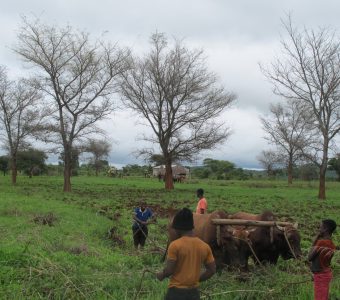


Botanical Name: Faidherbia albida
Common Name: Winter Thorn, Muchesi, Munga, Nsangu, Musangu
Plant Family: Fabaceae (Legume Family) Mimosoideae
Growth Form, Habitat and Distribution: A large deciduous tree with heavy, spreading branches and a rounded crown, diagnostically leafless in the wet season. Young branches zigzag between nodes. Occurs all over Zambia at low and medium altitudes, usually in riverine/alluvial situations where it may grow in extensive cohorts, and on heavier loam soils. An occasional species in most woodland types except in the north and west.
Size: Height up to 30m, usually smaller, spread up to 35m.
Bark: Whitish to dark grey-brown, rough, cracked and scaly. Spines are paired, straight (2cm), creamy with brown tips.
Leaves: Alternate, bipinnate, 8 to 20cm, with 3 to 10 pairs of pinnae, each with 6 to 20 opposite pairs of smallish (3 to 10mm), elliptic, asymmetric, grey-green leaflets. Petiole 2 to 3.5cm.
Flowers: Fragrant, small, creamy-white axillary spikes (up to 14cm), May and September.
Fruit: Indehiscent pod characteristically curled and twisted, bright orange to pale brown, up to 20cm long, ripening the following July to September. Pods fall to the ground containing up to 10 glossy brown seeds in a spongy matrix.
Uses: The pods, leaves and bark are browsed by most large herbivores, but the young pods contain poisonous prussic acid. The tree a good indicator of good soils and is used extensively in agro-forestry fixing nitrogen through bacterial symbiosis.
